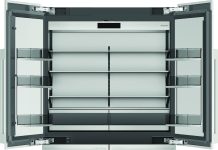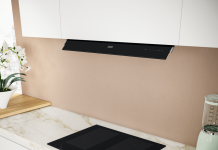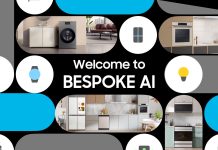 The systems installed in the smart homes make use of communication protocols that are interfaced with an infrastructure able to collect the data coming from the various subsystems and that allow a global management through a unique user interface. The main classification among the communication protocols is based on the availability of the technical specifications that describe the communication rules. The proprietary protocols, known as the “close” protocols, are distinguished from the “open” protocols or standards, since their technical specifications are not available to third parties. On the one hand, the open protocol allows the access and the consequent implementation from a manufacturer in order to produce a specific component based on a specific protocol, on the other hand the close protocol does not allow the access and the use by other manufacturers so that the protocol in not shared with third parties. From the end user point of view, products that communicate with an open protocol, accessible to many companies, give a higher flexibility during the design, the installation and the warranty period. The installation of devices produced by different manufacturers provides a higher discretionary to the final user in the components choice and during the period after the start up of the system, in case of replacement of the devices or for future expansions of the basic system.
The systems installed in the smart homes make use of communication protocols that are interfaced with an infrastructure able to collect the data coming from the various subsystems and that allow a global management through a unique user interface. The main classification among the communication protocols is based on the availability of the technical specifications that describe the communication rules. The proprietary protocols, known as the “close” protocols, are distinguished from the “open” protocols or standards, since their technical specifications are not available to third parties. On the one hand, the open protocol allows the access and the consequent implementation from a manufacturer in order to produce a specific component based on a specific protocol, on the other hand the close protocol does not allow the access and the use by other manufacturers so that the protocol in not shared with third parties. From the end user point of view, products that communicate with an open protocol, accessible to many companies, give a higher flexibility during the design, the installation and the warranty period. The installation of devices produced by different manufacturers provides a higher discretionary to the final user in the components choice and during the period after the start up of the system, in case of replacement of the devices or for future expansions of the basic system.
Independently from the kind of system and communication protocol, there is a huge variety of transmission means that can be used in order to receive and transmit the data. Some systems provide the possibility to choose all the transmission means available at the moment, some others are implemented only for some transmission means and not for all of them. The most common classification of the transmission means is between the wired and no wired ones: the systems that use cables, such as fibre or copper, are included in the first group, the systems that do not use cables, such as WiFi, are part of the second group. In addition to these ones, the are also some hybrid systems, such as the leaky feeder technology that relies on a wired communication up to a certain physical stage and, then, spreads the signal with a wireless RF technology through some openings operated at the end point of the cable.
From the Smart Grid to the Smart Home: the Internet world
The spread of the Smart Grid concept has changed the way of managing the energy over the last years, especially as the migration took place from a power grid based on the consumptions being able only to take energy from the electrical grid to a new advanced model that allows the consumptions to take and to enter energy in the power grid.
This new concept, founded on the possibility of exchanging energies according to the consumptions, has determined the modification of the existing power grid in order to allow the management of the different situations related to the exchange of energy (taking and entering). On the one hand the smart grid works outside the modern home, on the other the consumptions and the devices work inside the home. The other aspect that completes the picture is that the Internet of Things has modified, as well, the concept of having many devices in the home without communication among them, in order to move forward to devices connected to the same net and able to communicate among them. From this perspective, several communication protocols have been developed to allow the communication among all the devices present in the smart home, by using common platforms, in the majority of the cases based on the Internet world. The interfaced devices use a protocol internally to the subsystem they refer to, such as the household appliances, the lighting, the blinders, so that all the data coming from the different systems can be shared at an upper level with platforms using the Internet protocols. The Internet communication protocol refers to the ISO/OSI model that is composed by seven layers: each of them can communicate only with the lower layer and can provide services only to the upper level. The communication protocols used by the home automation systems may vary appreciably. Among the most common and settled standards there are Konnex and Lonworks, conceived some years ago and taken up by many manufacturers in this industry.
The Konnex standard, mainly used in Europe, has been started due to the convergence of EIB, Batibus and EHS. The Konnex standard has moulded the main characteristics of these three protocols, with special attention to the “plug & play” aspect. The devices, connected by a bus cable that carries the signals for the data, allow a cable optimization if compared to a traditional architecture. While the simplest configuration of a Konnex system is composed by 64 devices on a bus line without a signal repeater, in case of repeaters a configuration with 256 devices per line is allowed.
In a LonWorks system, the standard used for the collection of the smart metering electrical data in Italy, the devices (the “nodes”) perform the operations using calculation algorithms, according to the LonTalk protocol. The correct interaction of all the devices and the quality of the components are both assured by the LonMark association that assigns the trademark based on specific procedures and tests. The communication is performed through a “peer to peer” (P2P) philosophy so that a master device is not necessary in order to manage the communication. The “nodes” are based on the Neuron Chip that integrates three processors: two are dedicated to the protocol management and only one is dedicated to the programming of the specific functionality of the node. The domain in a LonWorks net is a group of many devices, logically divided in a certain number of subnets. The maximum number of subnets for a domain is 255, each subnet may contain up to 127 devices.
Energy@Home and Zigbee
The approach of Energy@Home, the association started in 2012 with the objective of creating and facilitating the interoperability and a more efficient energy management of the devices present inside the home, is aimed to use the open existing protocols, already settled over many years of testing. The purpose of the communication among the devices has two aspects: on the one hand, a more efficient energy management, on the other the increase of the comfort through the implementation of systems with already existing technologies and standards. Activities, such as the pre-cooling and the defrost for the refrigerator or the delay of the washing machine start or the time settings for the water heating, are part of the smart management of all the devices present in the home.
In order to implement this communication among the different devices in the home, Energy@Home has chosen the ZigBee, an application protocol settled over the years, based on a technology according to the IEEE 802.15.4 standard, suitable for the short distance communications with a low energy consumption (the same used for the Bluetooth and the WiFi). This wireless solution has some advantages related to WSN (Wireless Sensor Network), such as the “mesh” architecture: while some wireless solutions allow only to have a communication from a device to another, the mesh architecture implements the communication among one device and all the others through a “hopping” of the data, by directing the message as it happens in the Internet (TCP/IP). “Among the advantages of this technology there are the low energy consumption dedicated to the device management, the relatively low cost of the electronic components and the possibility of using a band with a non licensed frequency (16 channels in the band ISM 2.4GHz). The other peculiarities of the ZigBee net are the transmission range of 80 meters and a bit rate of 250Kbps. The ZigBee standard is based on the cluster concept, a set of attributes and messages that are the foundation in order to implement a specific service. The types of services may vary from those ones dedicated to the household appliances, the temperature management, the alert management or the statistics related to the consumption. This system works such as a database to which it is always possible to add new functionalities and new services, through the implementation of new clusters”, reveals Ing. Andrea Ranalli of the Innovation, Research & Prototyping Division of Telecom Italia.
Homelab and Openwebnet
Openwebnet is the language shared by the companies that have started HomeLab, the consortium that has recently presented the results of the research implemented as far as the interoperability of the devices in the home is concerned. Ing. Enrico Valtolina of the Partnership & System Integration and Customization Department of BTicino comments the evolution of HomeLab: “The Openwebnet language has been conceived in 2000 in the R&D laboratories of BTicino and in 2006 it has become public, freely usable and expandable by everybody; a language of and for everybody, this has made easy the creation of innovative solutions by other companies. Since then, its evolution continues; with HomeLab it has been enriched with new words to describe the behaviour not only of the classical home automation systems, but also of the household appliances, the thermo appliances and the wellness products. The objective for the next years is to involve more companies, products, ecosystems in this evolution process”. Another key part of the philosophy followed by the HomeLab companies is based on the Internet TCP/IP communication protocol, regardless of the transmission mean used. This choice has the benefit of using systems settled and tested over the years with already solved issues.
 An example of proprietary solution: Samsung
An example of proprietary solution: Samsung
“Smart Home” is an example of a proprietary solution that, initially available only for smart TVs, smartphones and household appliances, will allow the management of the Samsung devices in the home. The control of the devices will be implemented by a wireless technology, based on the Smart Home protocol (SHP). The main planned functionalities are: the functionality to control, also remotely, the household appliances with a smartphone, a tablet or a smart TV, the monitoring functionality to access to the images coming from the cameras present on the devices and the assistance functionalities able to alert, after that a diagnostic analysis is performed, the customer when a replacing of a device or a repair service is needed, due to anomalies or faults.
(Laura Lazzerini)





